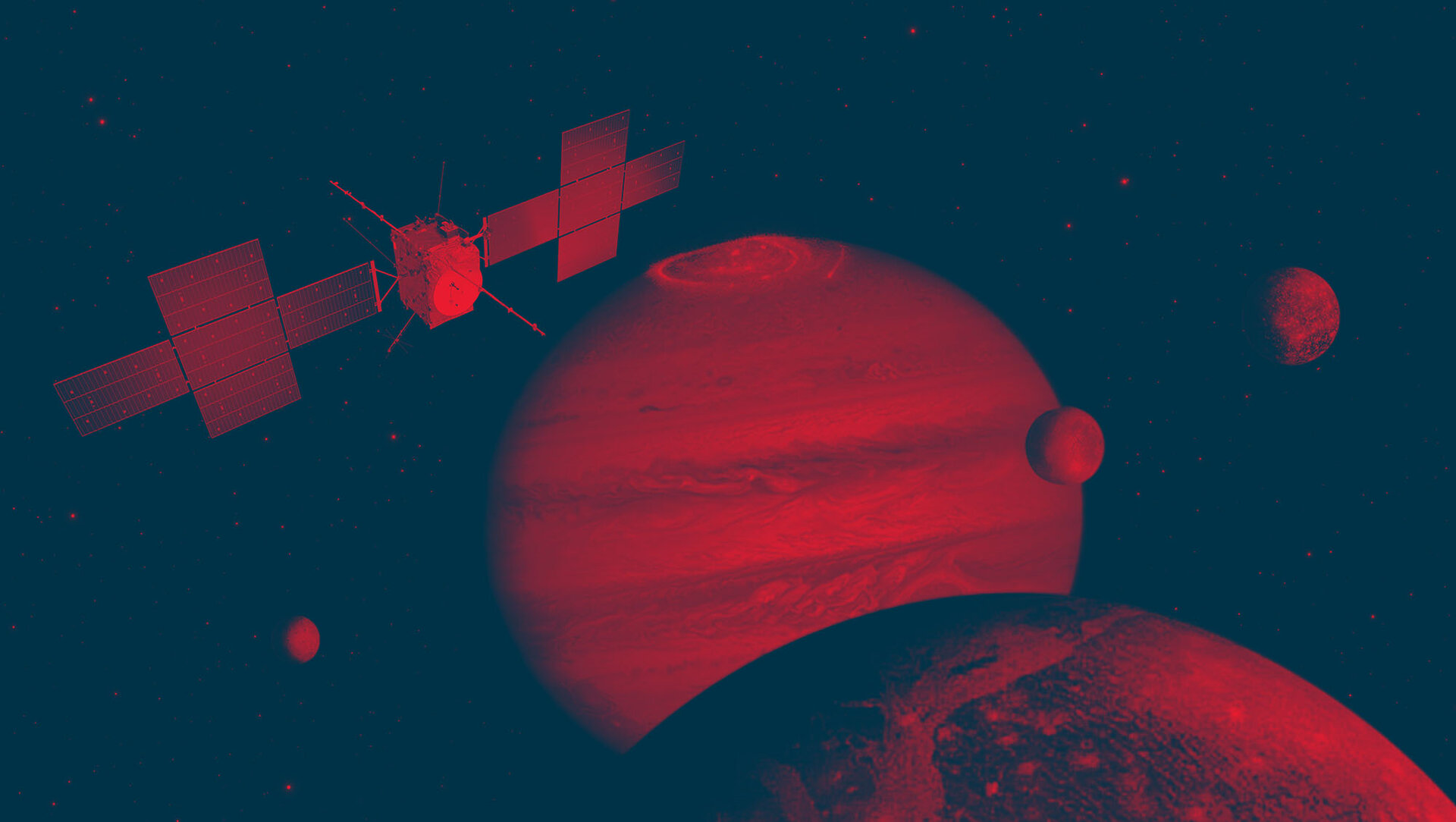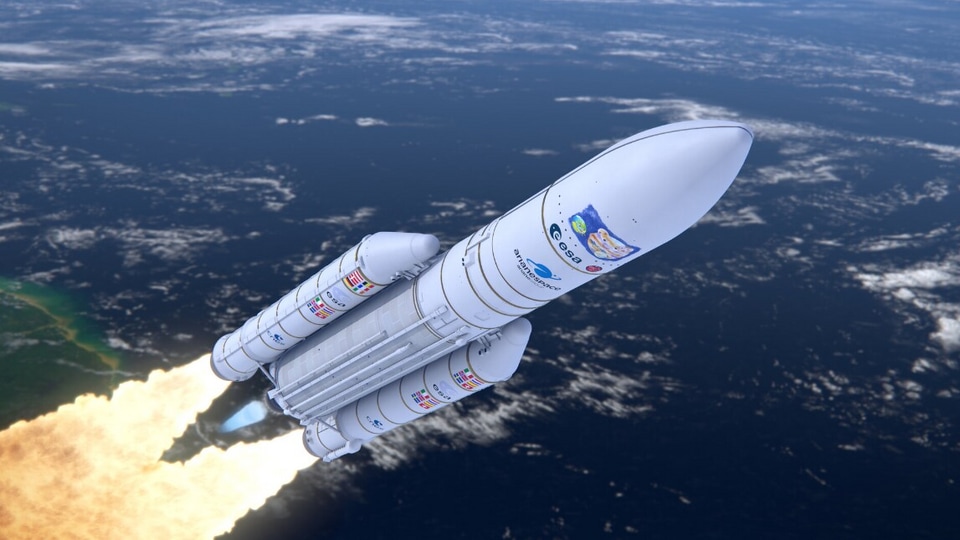
The European Space Agency (ESA) successfully launched the JUICE mission that is going to probe three of Jupiter’s moons. Read to know more.
What is ESA’s JUICE mission all about?
Jupiter Icy Moons Explorer or JUICE is a mission by the ESA for a better understanding of Callisto, Europa, and Ganymede, three of Jupiter’s moons. It took off from Kourou, French Guiana on an Ariane 5 rocket. The mission was successfully launched with a delay of one day due to the risk of lightning. The 6,200 kg spacecraft is going to deploy solar antennas, arrays, and other instruments over the next 17 days. Following this, it will test and prepare the instruments for three months.

The mission is equipped with 10 sophisticated instruments. They are said to be the “most powerful remote sensing, geophysical, and in situ payload complement ever flown to the outer solar system.” JUICE is going to take about eight years to reach Jupiter. “Six months before the spacecraft enters Jupiter’s orbit, it will begin its nominal science phase,” revealed the ESA. It is going to rely on the gravitational assistance past Venus, Earth, and Mars to reach its destination. A gravity assist is a flyby technique that can increase or reduce a spacecraft’s momentum based on the orbit.
More on the endeavor:
ESA’s JUICE mission is going to explore five important mysteries. It will find out if the Jupiter system hosts life or if it was hosting life in the past. It will also better understand what a typical gas giant is. The mission is going to learn more about Callisto, Europa, and Ganymede. (https://teamtapper.com/) The Jovian moons are also thought to hold huge oceans of liquid under their icy crusts. Additionally, this is going to be the first spacecraft to orbit a moon from the outer solar system.
It will study the largest moon in the solar system, Ganymede. The spacecraft is going to perform two flybys of Europa and 21 flybys of Callisto. Europa’s ocean is believed to be in contact with a rocky floor. The floor is thought to be supplying energy and food for life. Additionally, as per the official timeline provided by the ESA, the mission will reach its end in 2035.






